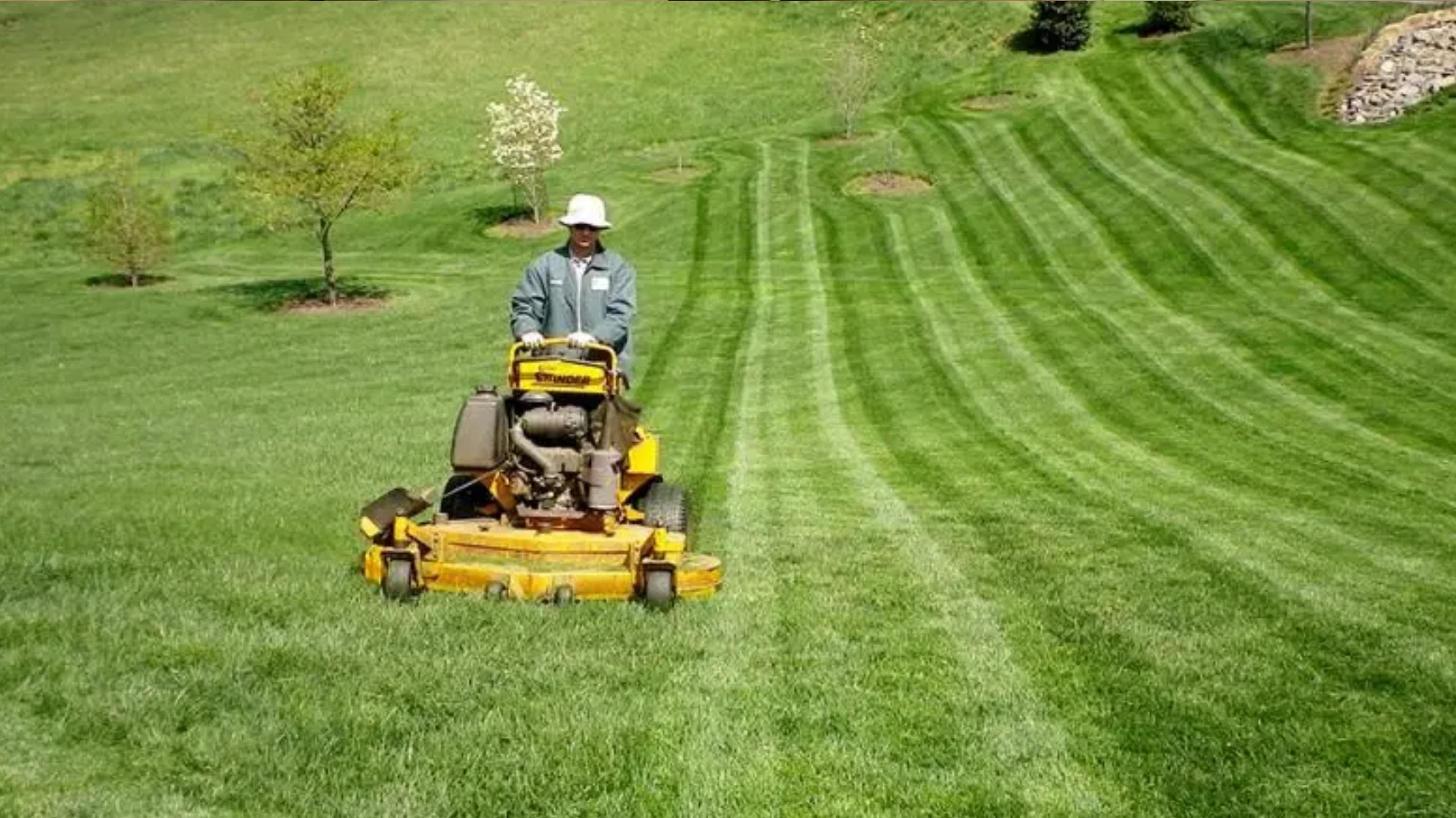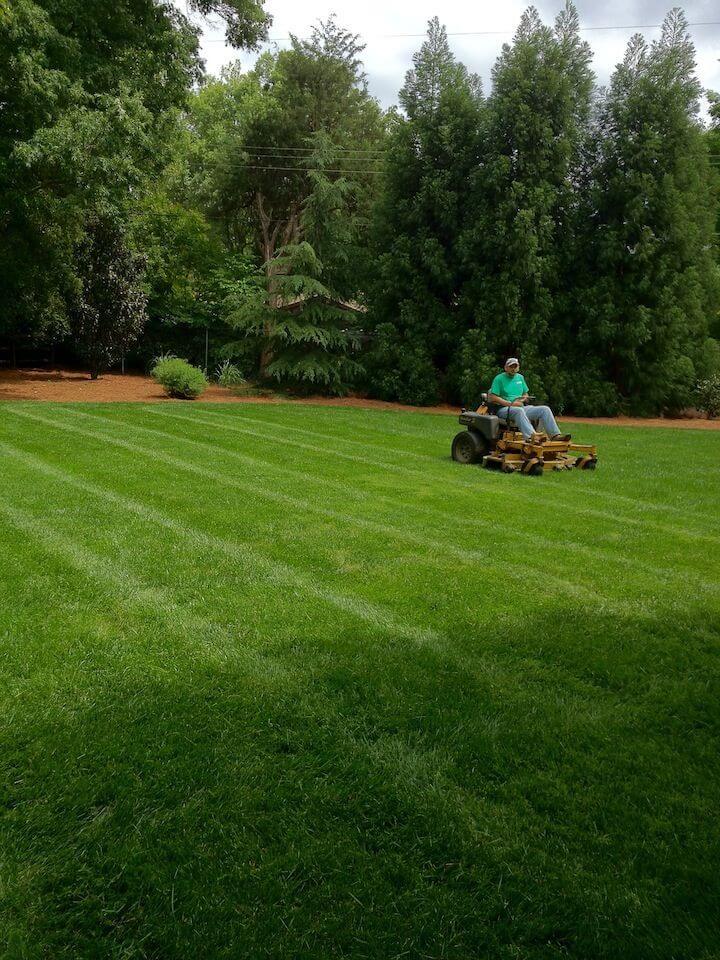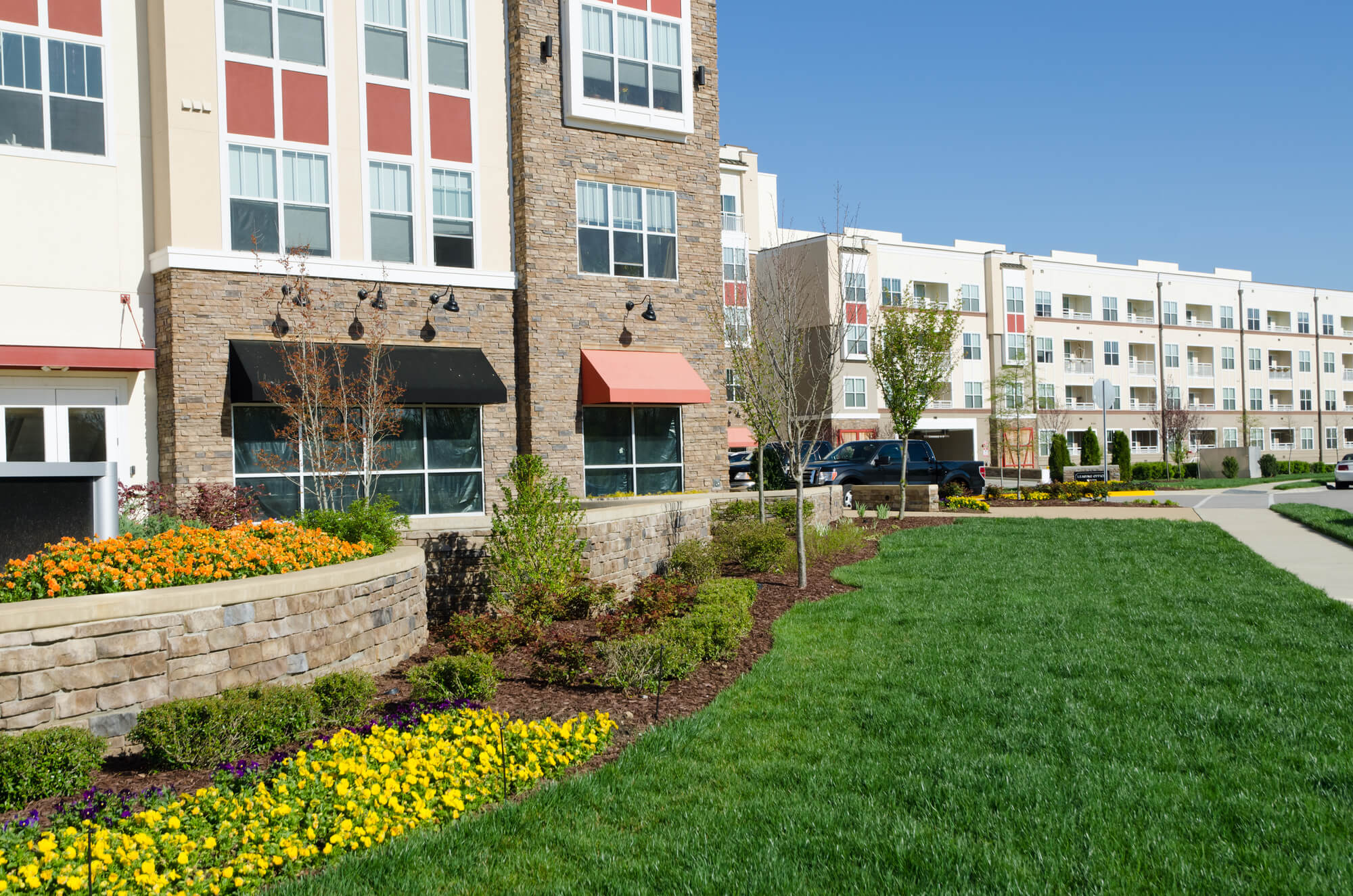Landscape maintenance isn’t a one-shot deal. Just as homes need to be repainted and maintained, so do landscapes need to be managed. Plants grow and die. Weeds inevitably crop up, insect pests may invade, and the weather may change. Below are brief synopses of some of the services we provide that will keep your lawn in peak condition. From xeriscape to modern, we got it all!
Landscape Maintenance Charlotte NC – Weed Control in Monroe NC
Grasses and Sedges
Weed grasses are usually bunchy or upright plants with barely noticeable flowers and round or flattened hollow stems, according to North Carolina is State University TurfFiles Center. Their leaves grow in groups of two, and are considerably longer than they are wide. In contrast, sedges’ stems are always triangular and solid and their leaves grow in groups of three. Rough bluegrass and carpetgrass are examples of grassy weeds affecting North Carolina; kyllinga and nutsedge are sedge weeds.
Broadleaf Weeds
Broadleaf weeds are diverse; they grow upright, parallel to the ground or in a vining pattern. Their leaves are usually wider than long, their stems are square or round and they often have showy flowers. Examples of broad leaf weeds effecting North Carolina include hairy bittercress and carpetweed.
Basic Management
While herbicides are generally effective against North Carolina lawn weeds and weed control in Monroe NC, the North Carolina State University TurfFiles Center advises herbicides should be a short-term solution while figuring out the underlying problems that lead to the weeds. Keeping lawns vigorously growing and addressing soil imbalances helps. Poorly growing areas can be a particular problem, as light penetrates directly to the soil here, making weeds more likely.
Landscape Maintenance Services
Ask About Our 1 Year Service Agreement
Landscape Maintenance Charlotte NC | Fertilization
Performance Lawn and Landscape recommends that you fertilize four times a year if you want to nurture thick, dense grass that resists disease and weed invasions. If a thick, green, beautiful weed-free lawn is your goal then you are going to need to apply some type of fertilizer. It is a very simple process once you determine the proper type of fertilizer you need for the type of grass you have in your lawn. Performance Lawn and Landscape is happy to provide this information as a service to you.
Core Aeration – Seasoned Landscape Maintenance
The Process
The process of soil aeration involves breaking up larger fragments of soil into smaller pieces. Large fragments of soil have the ability to retain water as well as nutrients, which can make it difficult for certain types of plants and even grass to row. Aeration allows soil to properly drain water, In addition, it allows certain insects like worms more space to allow your lawn or garden go through its natural growing process.
Core Aeration in Monroe NC is a mechanical device with pieces of metal on the bottom called “tines.” A core aerator is its own piece of equipment, with a handle that you hold as you push the device and tines on the bottom beneath a main base. As you move the core aerator across your lawn, it makes a series of holes by extracting the soil using the tines. This leaves the surface of your lawn intact, but still allows the aeration process to benefit your lawn. Core aerators are typically used prior to starting a new lawn for the year or on a grassy area that has already been established.
Landscape Maintenance | Seeding
Over Seeding, this practice is used on fescue lawns to encourage healthier turf. Without overseeding, fescue lawns often suffer due to extreme heat.
There are many different tupes of grasses to plant, and you want a grass seed that will produce a hardy, perennial lawn. Your primary consideration is your regional climate. Before purchasing grass seed, read the label to be sure the seed has been packaged for less than 10 months and to find out if the seed is one variety, a blend or a mix.
Landscape Maintenance | Tree & Shrub Prunning
Begin by pruning away dead or damaged branches with a pruning shear, lopper or a saw. Your tools should be sharp enough to leave a straight, clear cut, with no ragged edges. Consider using anvil pruners and bypass loppers, which allow even smaller hands to cut branches up to 1 1/2″ thick. You’ll need a small powered chain saw, a wood saw or metal hacksaw for thicker branches and trunks. Prune just above what’s known as the “branch collar,” that little ring of bumpy tissue at the junction of a branch and main trunk. Why? The bumpy area is rich with plant growth cells. Leaving the collar intact gives your shrub a better chance to callous over and recover from your surgery.
Always cut branches on a slant, at a 45-degree angle. Why? A flat-topped cut may cradle water when it rains, inviting fungus or disease. Rainwater slides off a slanted cut. For a natural look, use the technique known as “heading back.” Eyeball the bush and locate the tallest main branch. With your eye and hand, follow this main branch until it meets a lower side branch that more or less points upwards. Cut the main branch off just above the smaller one. Repeat the process with this and all main branches, stepping back now and then — maybe even across the street — to assess the results. Prune slightly lower down than you feel really comfortable with; remember, new growth will add additional height over the next six months.
For a major overhaul — removing 10′ or more from a bush — use a saw on the main trunks, removing only a third of the height at each pass to prevent accidents.
Conifers and needle evergreens, such as juniper, cypress, pine, and ceader are best pruned back in stages. Start in late autumn or early winter, and use your cuttings for holiday decorations. The following spring, after you see the first hints of new growth emerging from your previous cuts, prune again to further reduce the height of evergreen shrubbery. Needle evergreens are tricky: If you prune below green growth, a branch may never again sprout. Rejuvenate fan-shaped deciuoius bushes such as forsythia, lilacs and bush-form roses by cutting back a third of all branches right down to the ground each year.
For bushes in foundation plantings, prune away any branches rubbing against the house or wall. Your neighbors won’t see the plant’s backside, so feel free to cut back for 8 inches to 12 inches of clearance. This improves air circulation around the back branches and ultimately results in a healthier bush.
Do you need to cover the cuts with tree paint or wax? No. If you have made a good, angled cut at the proper time, each species will safely heal its wounds without damage from frost, insects or disease. And when is the proper time? For needle evergreens, the winter dormant period.
Mulch – More Landscape Maintenance
Mulch is an organic material that is commonly spread across gardens and flower beds, where it pays many dividends. Mulch helps conserve soil moisture, prevent erosion, suppress weed growth and serve as an effective insulator against temperature extremes, from summer heat to winter freezes.
In addition, mulch releases valuable nutrients into the soil as it decomposes and can even add an attractive background for various plants, from ornamental flowers to trees.
Pine Needles
Long Leaf Pine Straw
This Type Of Product Has A Deep Rich Auburn Appearance, Along With A Waxy Finish, That Allows For Long Durability.Long Leaf Is The Preferred Choice For Professional Landscapers In The Southeast.
The Needles Range From 8” – 14” In Length.
Long Leaf Pine Straw
This Type Of Product Has A Deep Rich Auburn Appearance, Along With A Waxy Finish, That Allows For Long Durability.Long Leaf Is The Preferred Choice For Professional Landscapers In The Southeast.
The Needles Range From 8” – 14” In Length.
Wheat Straw
This Type Of Product Has A Golden-Yellowish Appearance And Contains Nutrients Desired By Newly Seeded Lawns.It Is Typically Hand Spread Or Blown By A Machine To Help With Erosion Or Seeding.
Seasonal Flowers
Flowers add a nice touch of color to lawns and homes. With their varying growth cycles and blooming seasons, strategically designed flower beds can provide an ever changing display of beauty.
Irrigation Maintenance
Home lawn sprinklers vary widely in their size, cost, and complexity. They include impact sprinklers, oscillating sprinklers, drip sprinklers, and underground sprinkler systems. Small sprinklers are available at home and garden stores or hardware stores for small costs. These are often attached to an outdoor water faucet and are placed only temporarily. Other systems may be professionally installed permanently in the ground and are attached permanently to a home’s plumbing system.





